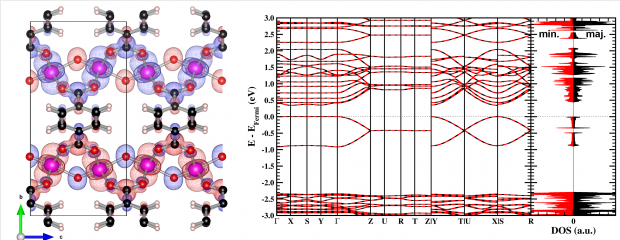First-principles study of antisite defect configurations in ZnGa2O4:Cr persistent phosphors
Abstract
First-principles simulations on zinc gallate solid phosphors (ZGO) containing a chromium dopant and antisite defects rationalize the attractive interactions between the various elements. A large number of antisite pair configurations is investigated and compared with isolated antisite defects. Defect energies point out the stability of the antisite defects in ZGO. Local structural distortions are reported, and charge transfer mechanisms are analyzed based on theoretical density of states and Hirshfeld-I charges.

 Open Access version available at
Open Access version available at 
